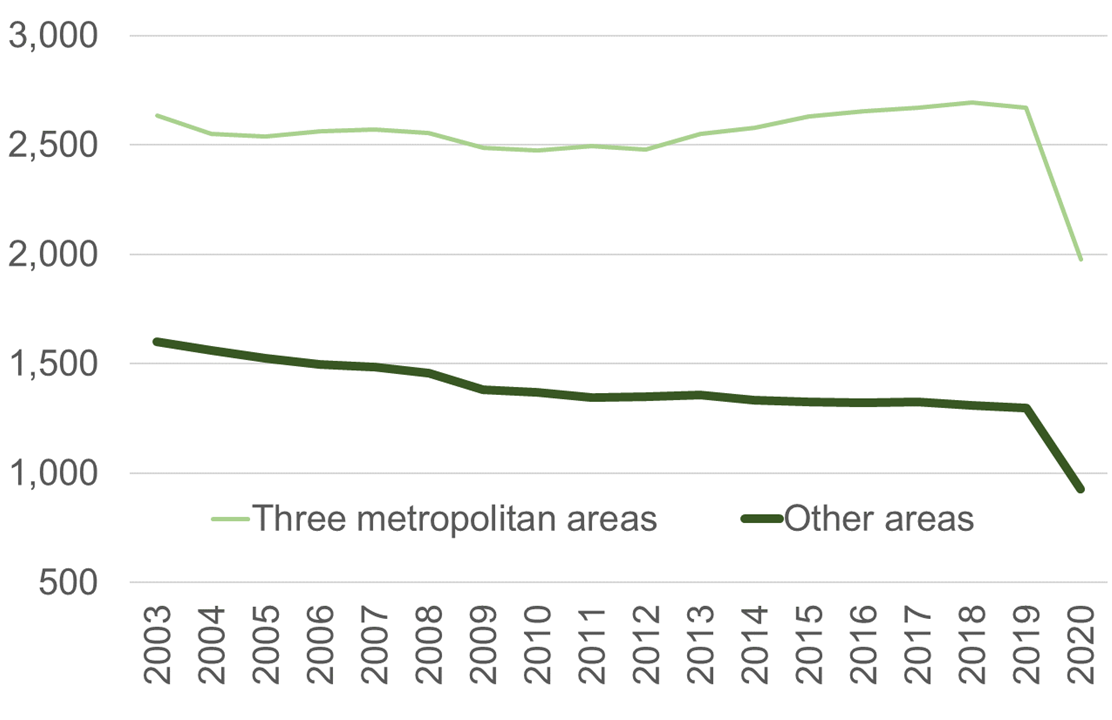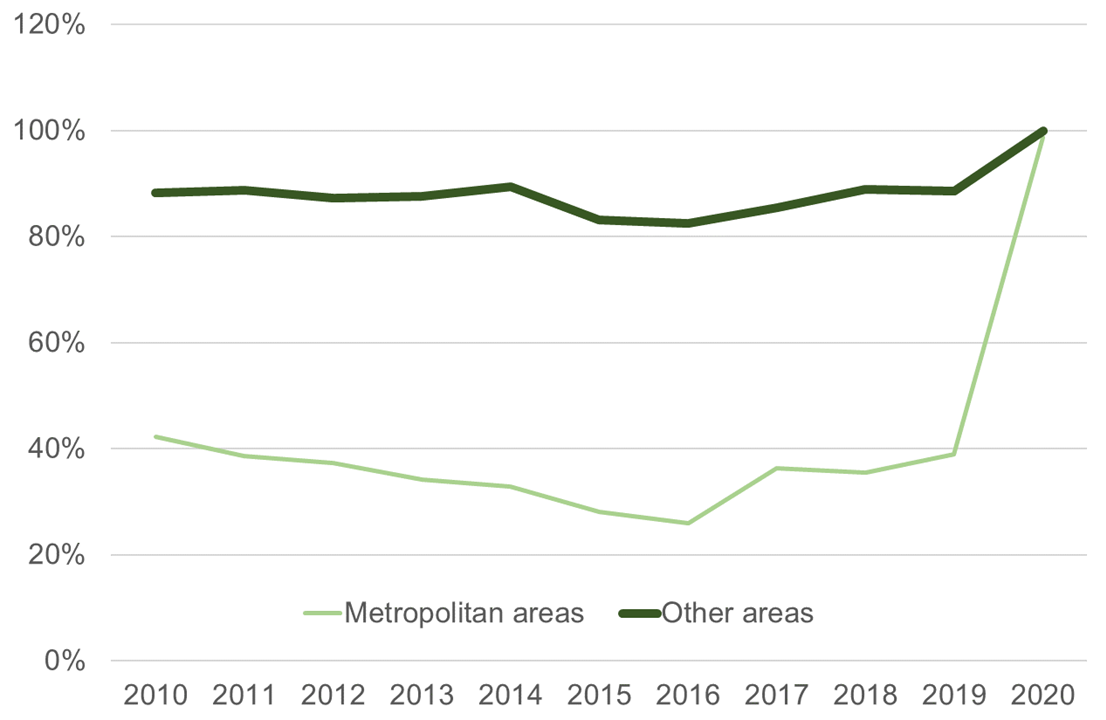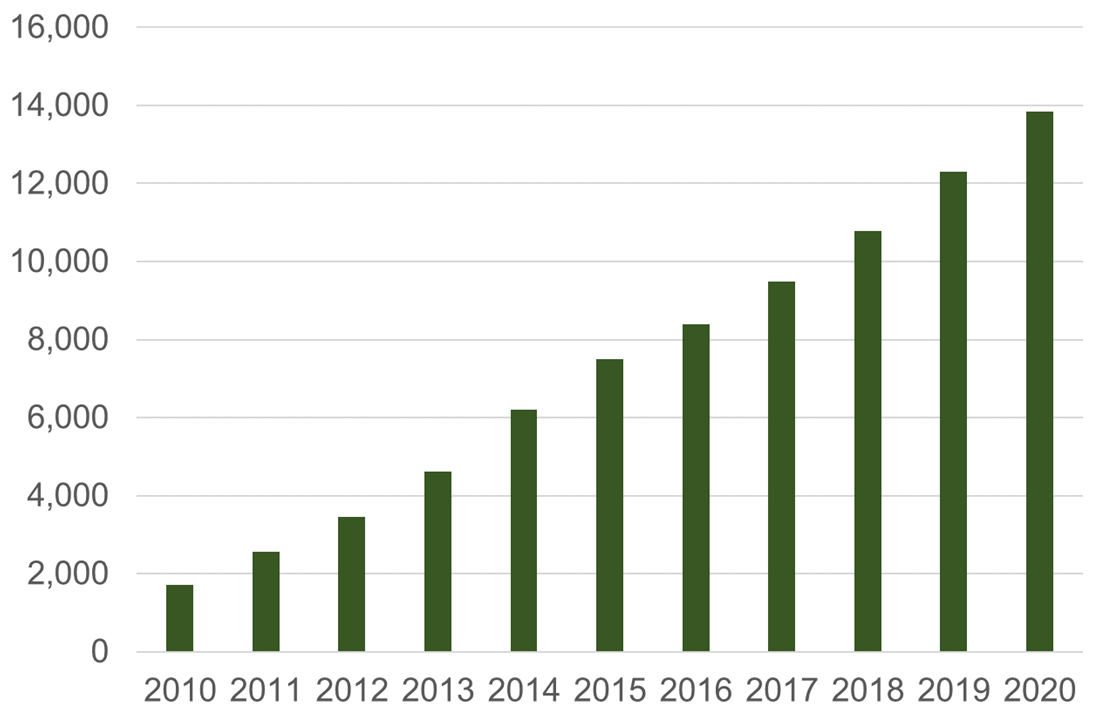Will it be impossible for travelers to visit local Japan in 10 years? (2)
Table of Contents
1: Current situation of passenger bus operators
2: Discontinued passenger bus routes
1: Current situation of passenger bus operators
A passenger bus is a bus that carries an unspecified number of passengers. Passenger buses include express buses and sightseeing buses that run between cities, but this section discusses passenger buses.
The number of passengers declined by 19% between 2003 and 2019. This situation is similar to regional railways.
Number of passengers carried by passenger buses (million)

Source: Nihon Bus Association
Due to a decline in the number of users and other factors, regional passenger bus operators continue to lose money, with the proportion of loss-making operators consistently exceeding 80%.
Percentage of loss-making passenger bus operators

Source: Nihon Bus Association
2: Discontinued passenger bus routes
These difficult conditions have led to the continued closure of regional passenger bus routes, as well as regional rail routes. Between 2010 and 2020, 13,845 km of routes (an average of 1,259 km per year) were closed. In the same period, rail routes were closed down for a cumulative total of 407 km, so it is understandable how serious the closure of bus routes is.
Discontinued operating distance of bus routes since 2010(km)

Source: Ministry of Land, Infrastructure, Transport and Tourism
However, Japan’s total permitted distance of passenger bus routes is 588,000 km. Discontinued routes, therefore, account for only 2.4% of the total routes since 2010. On the other hand, considering that passenger bus routes are also urban and express bus routes for which there is a steady demand, the impact of discontinued bus routes in rural areas is significant. More than 80% of the route length (an average of 1,259 km per year) of the approximately 1,500 km length of Japan’s mainland is discontinued every year. As mentioned, it is not an exaggeration to say that eventually, ‘ We will no longer be able to travel to rural areas of Japan by public transport in 10 years.’
